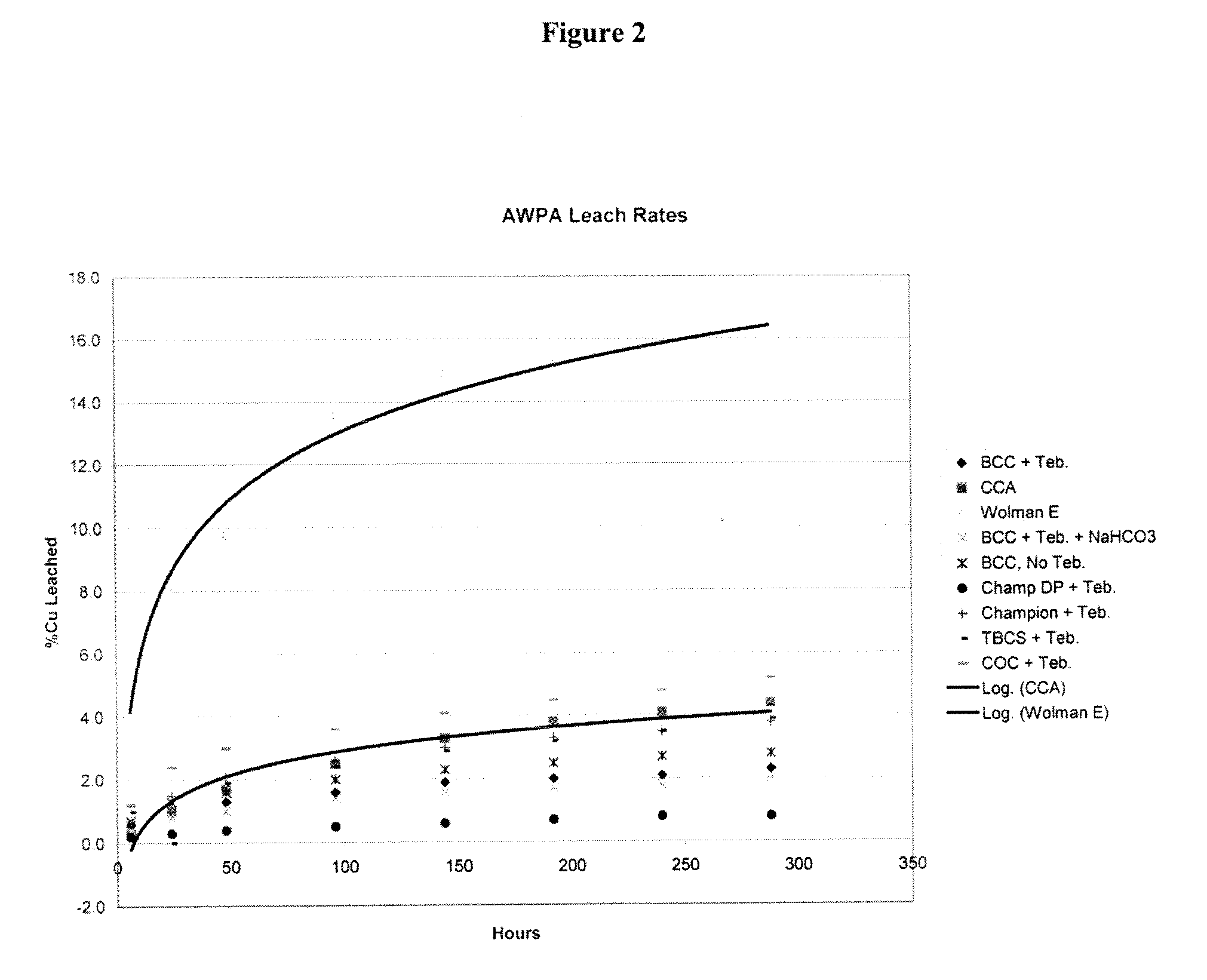Particulate Wood Preservative and Method for Producing Same
a wood preservative and wood technology, applied in the field of wood preservatives, can solve the problems of affecting the long-term efficacy, and contaminating the environment, and achieve the effect of widening the distribution of particle size and reducing the amount of biocid
- Summary
- Abstract
- Description
- Claims
- Application Information
AI Technical Summary
Benefits of technology
Problems solved by technology
Method used
Image
Examples
example 1
Milling Chlorothalonil with 0.5 mm Zirconium Silicate
[0180]The laboratory-sized vertical mill was provided by CB Mills, model# L-3-J. The mill has a 2 liter capacity and is jacketed for cooling. Unless otherwise specified, ambient water was cycled through the mill cooling jacket during operation. The internal dimensions are 3.9″ diameter by 9.1″ height. The mill uses a standard 3×3″ disk agitator (mild steel) on a stainless steel shaft, and it operates at 2,620 rpm.
[0181]The media used in this Example was 0.4-0.5 mm zirconium silicate beads supplied by CB Mills. All particle size determinations were made with a Sedigraph™ 5100T manufactured by Micromeritics, which uses x-ray detection and bases calculations of size on Stokes' Law.
[0182]The formulation contained 20.41% chlorothalonil (98% active), 5% Galoryl™ DT-120, 2% Morwet™ EFW, and 72.6% water by weight, and the concentrate had a pH of 8.0. The total batch weight was about 600 g. The results of a 7.5 hour grinding study are give...
example 2
Milling Chlorothalonil with 0.5 mm Zirconium Oxide
[0185]The same mill and conditions were used in this experiment as in experiment 1. However, the grinding media was 0.5-0.6 mm cerium-doped zirconium oxide beads obtained from CB Mills. The density of the cerium doped zirconium oxide is ˜6.0 g / cm3. The formulation contained 20.41% chlorothalonil (98% Active), 5% Galoryl™ DT-120, 2% Morwet™ EFW, 3% Pluronic™ F-108, and 69.6% water by weight, and the concentrate had a pH of about 7.3. The total batch weight was about 600 g. The results are shown in Table 2 below.
TABLE 2Particle Size Data - Volume %Milling Timed50With Diameter Greater ThanMins.μm10 μm5 μm2 μm1 μm0.4 μm0.2 μm03.448307792——900.31333322—2400.210123351
[0186]For the higher density 0.5 mm zirconia milling media, a composition with a d50 less than 1 micron and a d95 less than 1 micron was obtainable in 90 minutes, and a composition with a d50 less than 0.3 microns and a d95 less than 0.4 microns was obtainable in 6 hours. The ...
example 3
Milling Sparingly Soluble Copper Salts with 0.5 mm Zirconium Silicate
[0187]This comparative example and subsequent example show the effectiveness of the milling media and process on the particle size distribution of inorganic copper salts.
PUM
 Login to View More
Login to View More Abstract
Description
Claims
Application Information
 Login to View More
Login to View More - R&D
- Intellectual Property
- Life Sciences
- Materials
- Tech Scout
- Unparalleled Data Quality
- Higher Quality Content
- 60% Fewer Hallucinations
Browse by: Latest US Patents, China's latest patents, Technical Efficacy Thesaurus, Application Domain, Technology Topic, Popular Technical Reports.
© 2025 PatSnap. All rights reserved.Legal|Privacy policy|Modern Slavery Act Transparency Statement|Sitemap|About US| Contact US: help@patsnap.com



